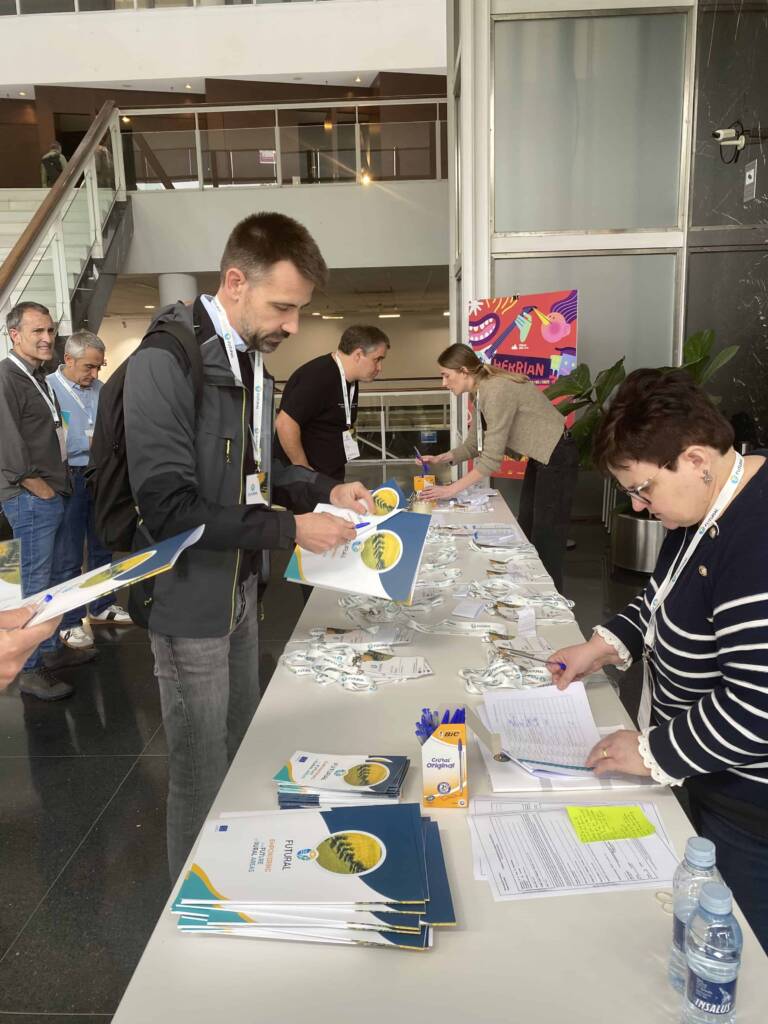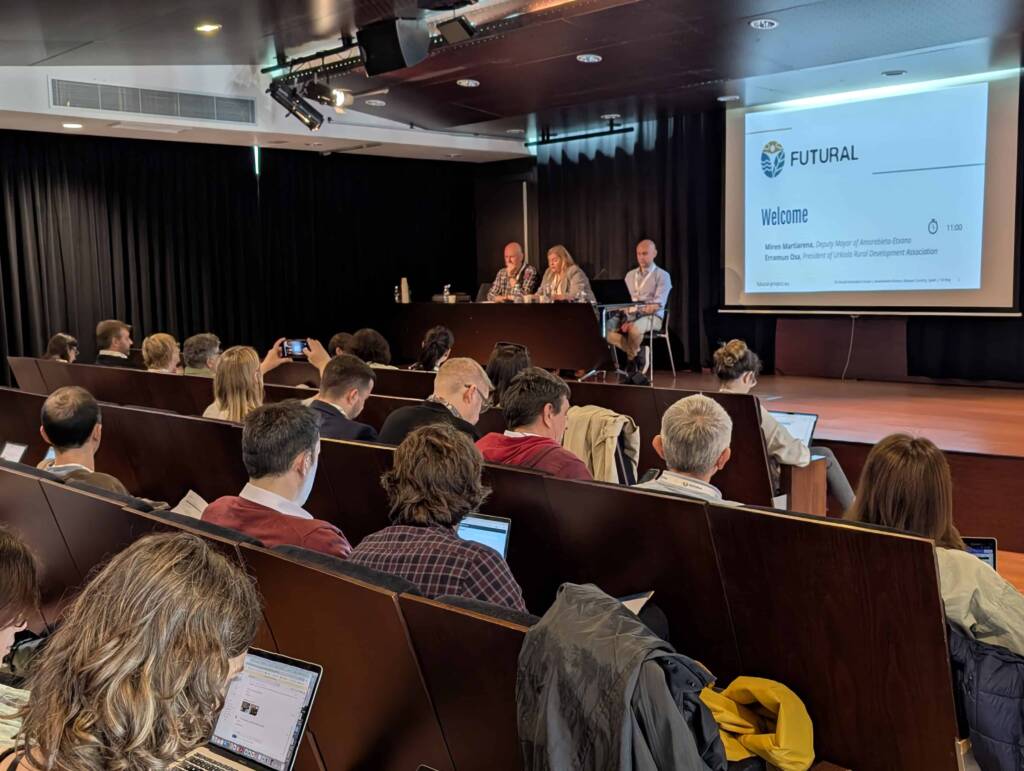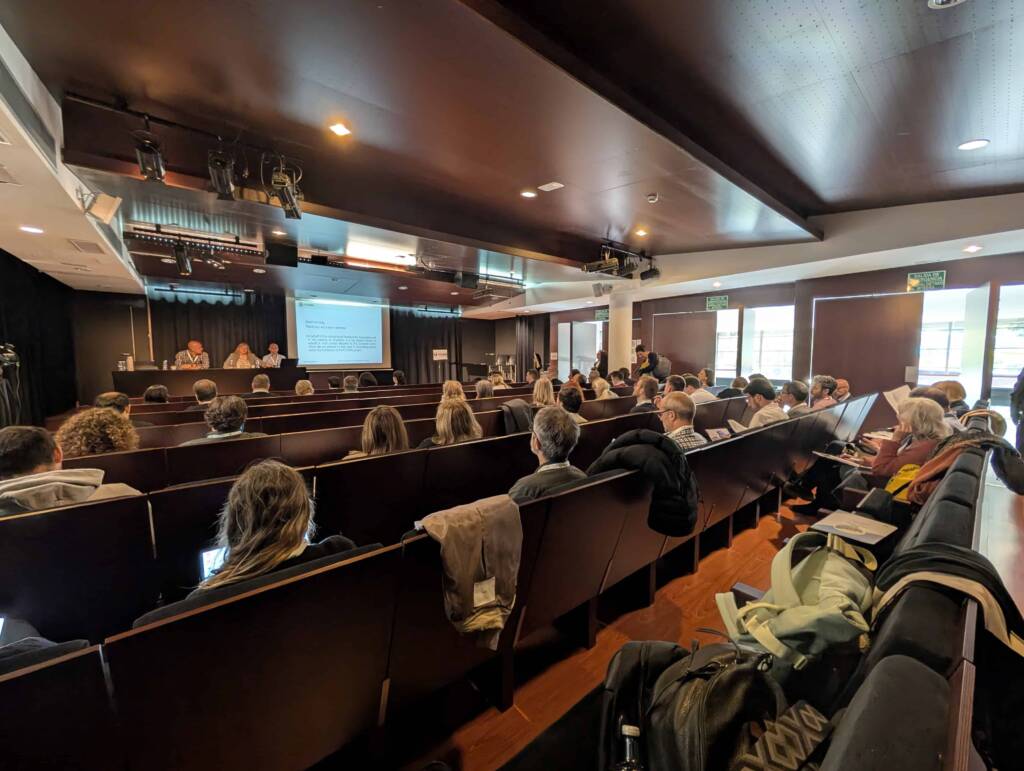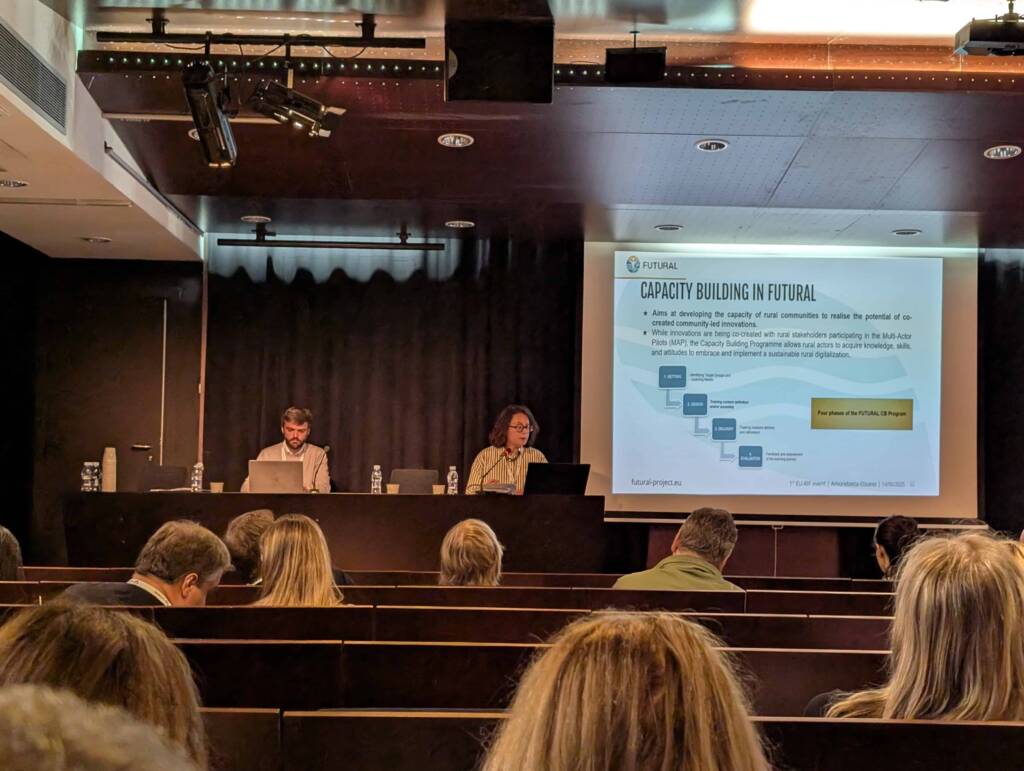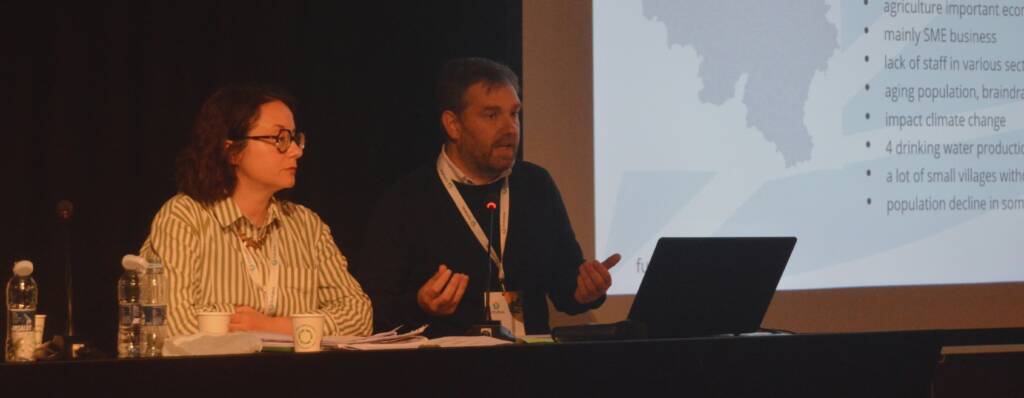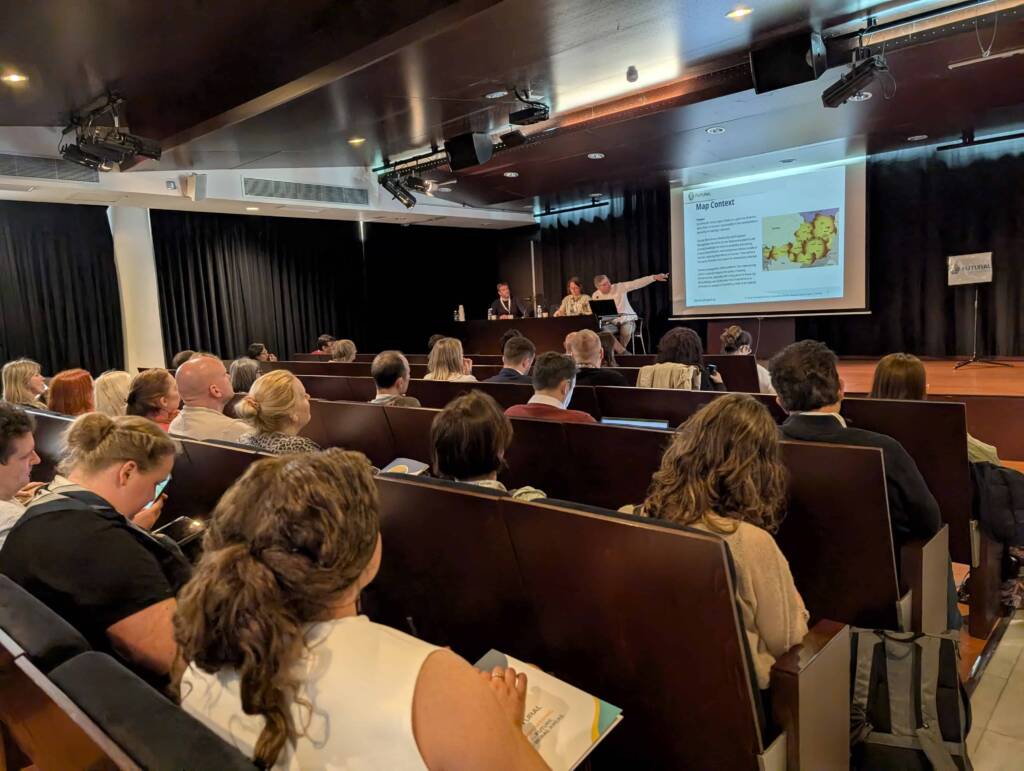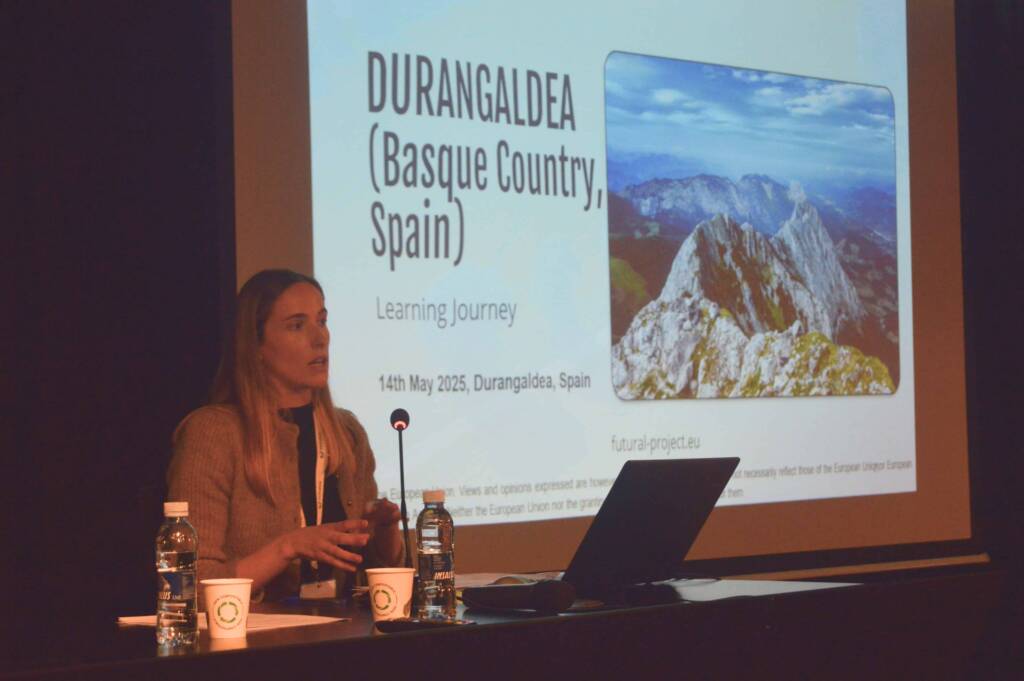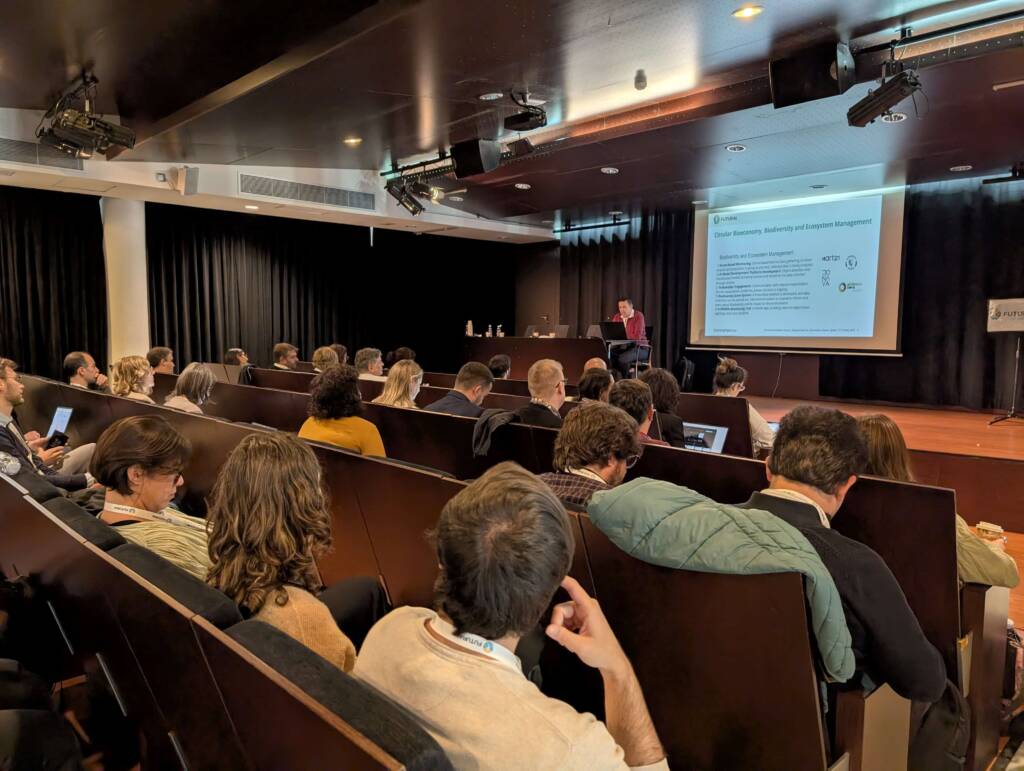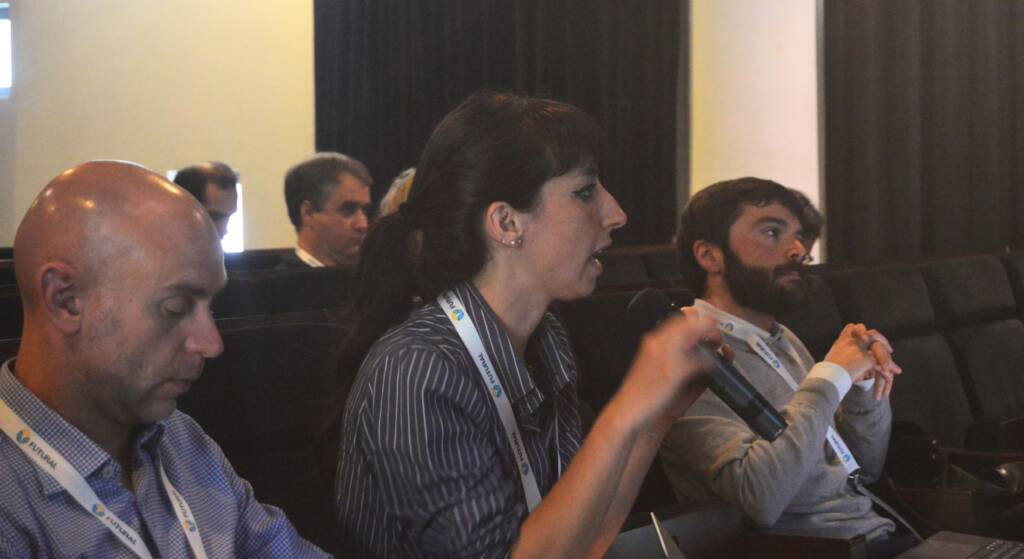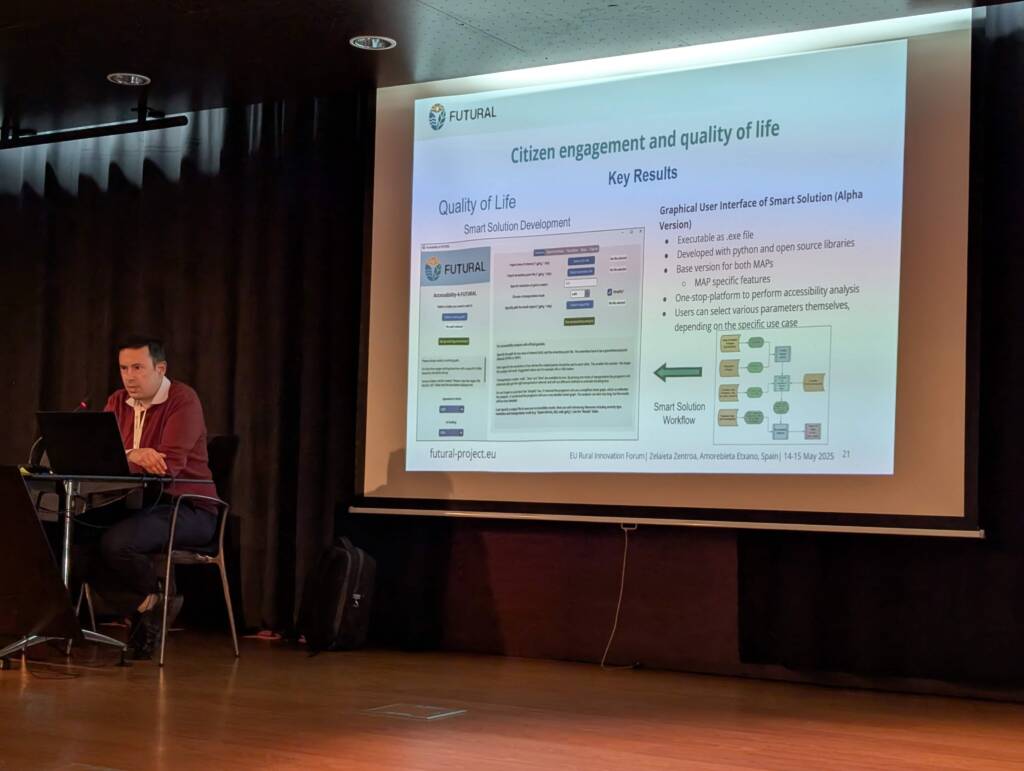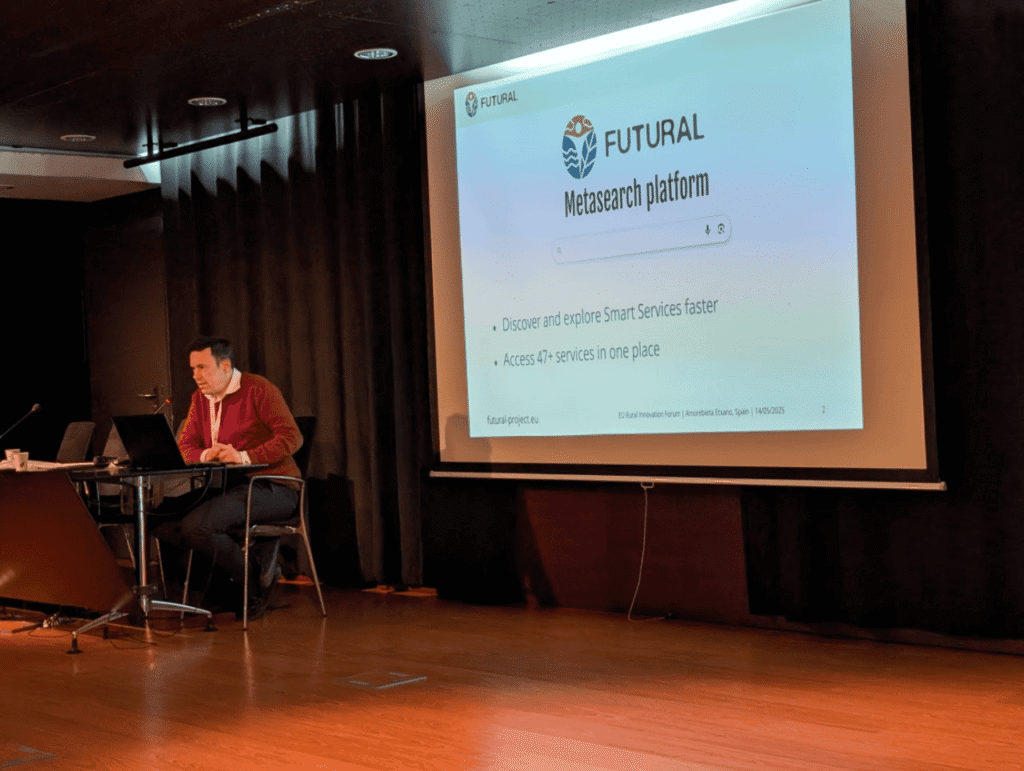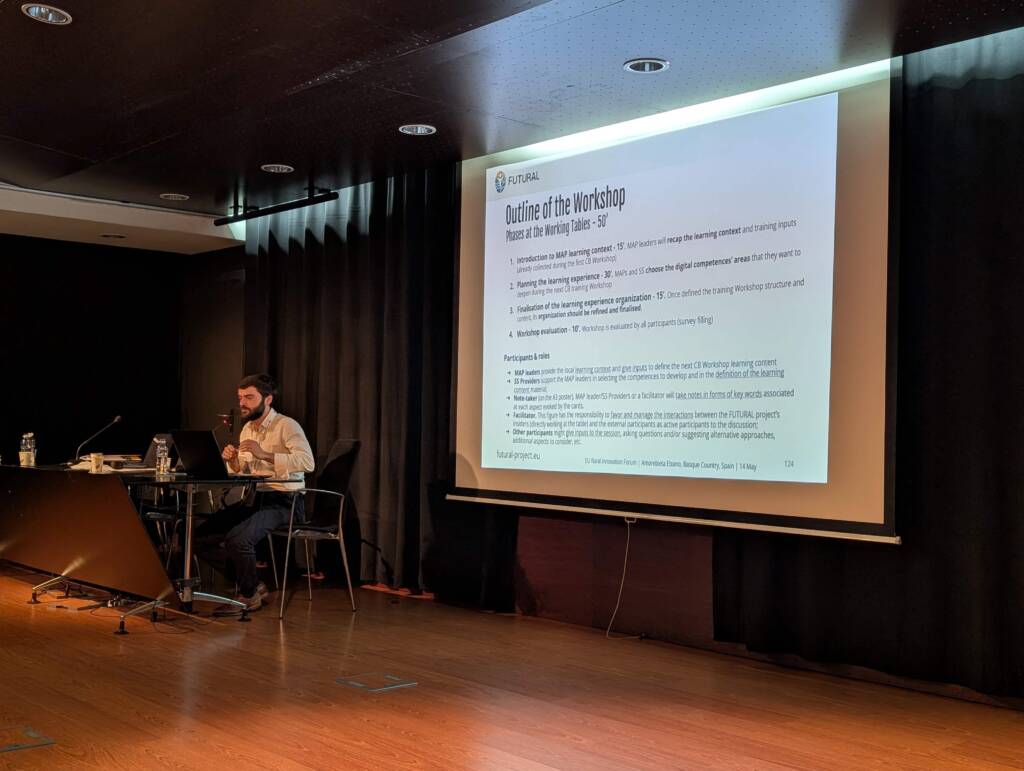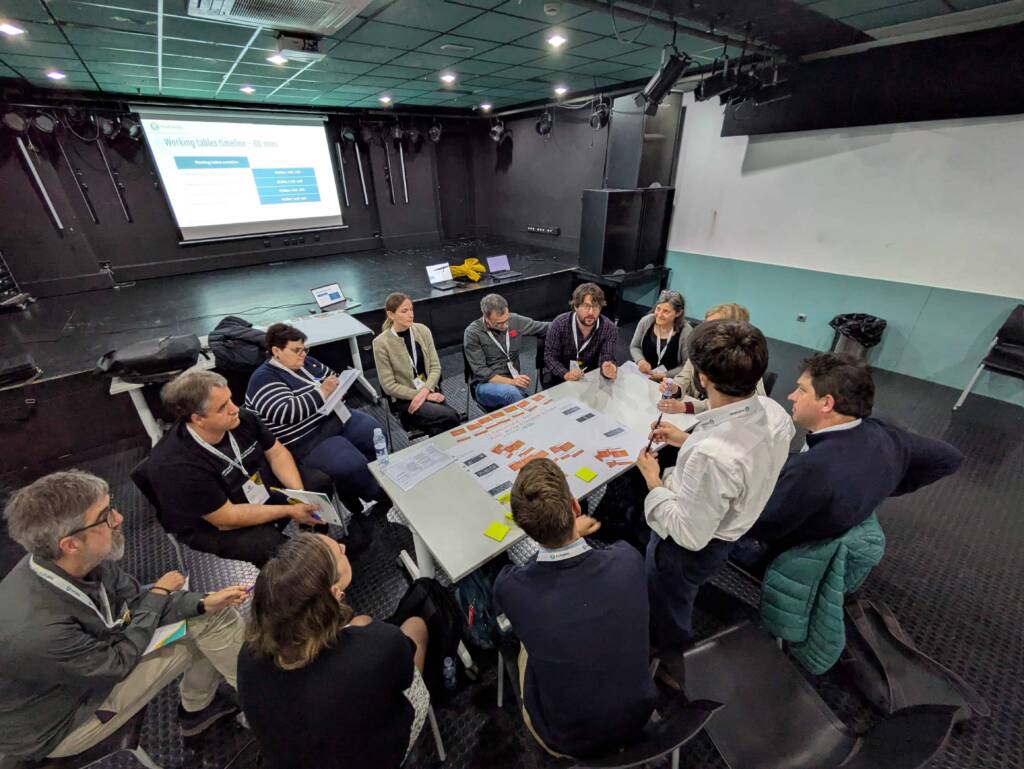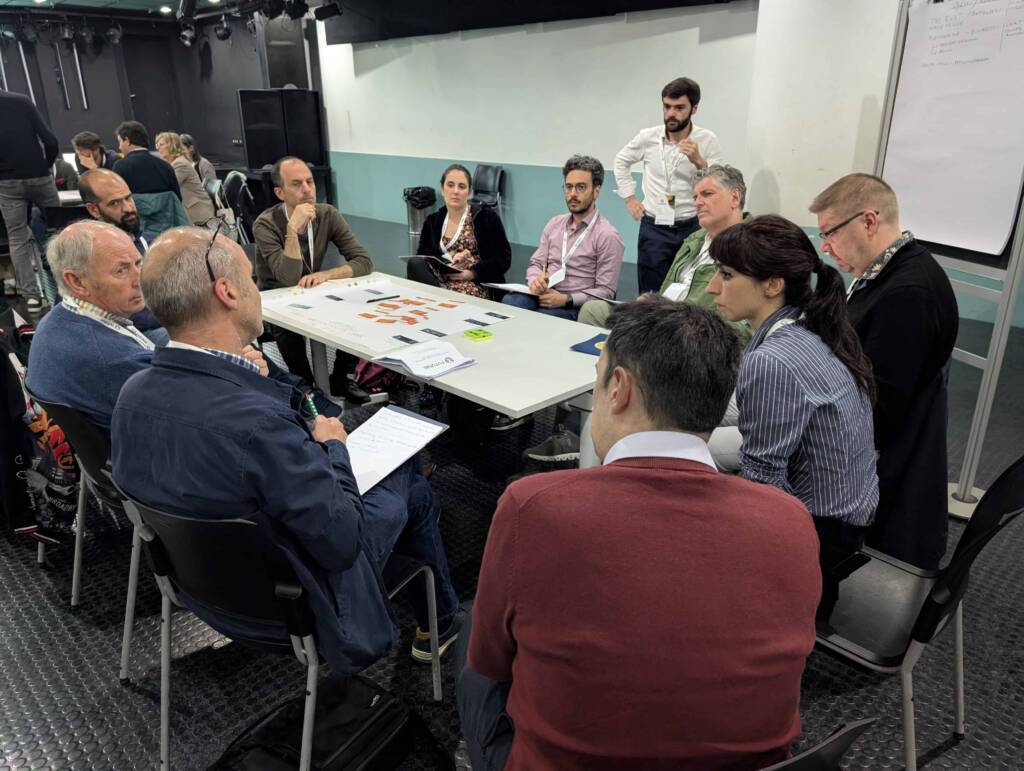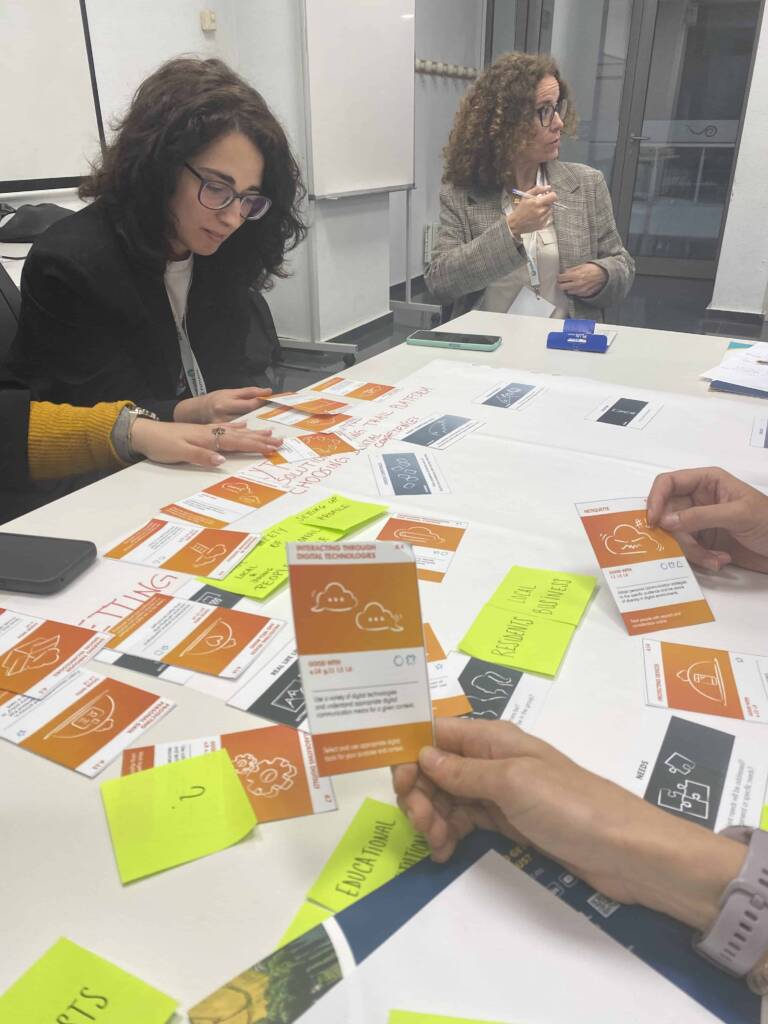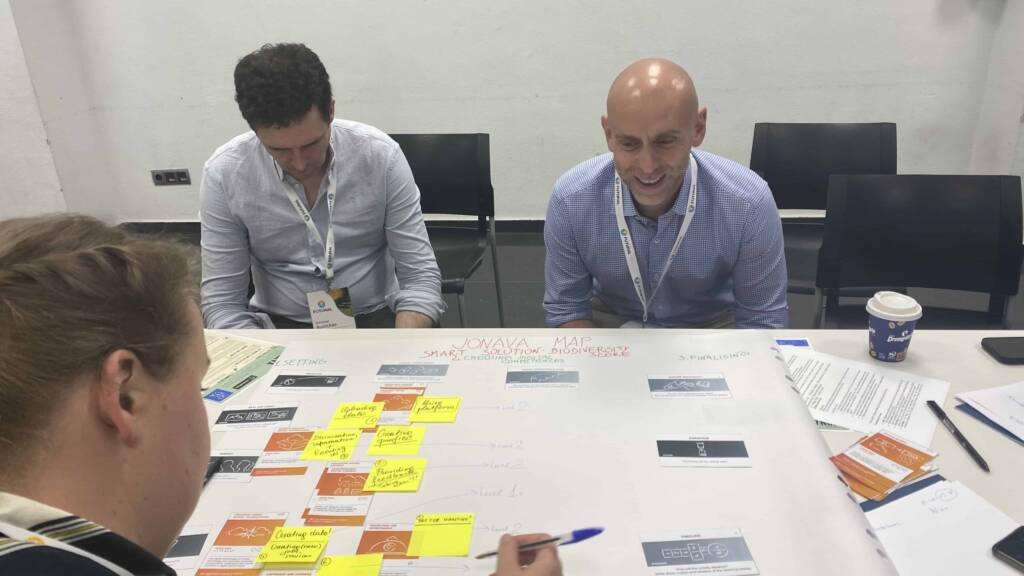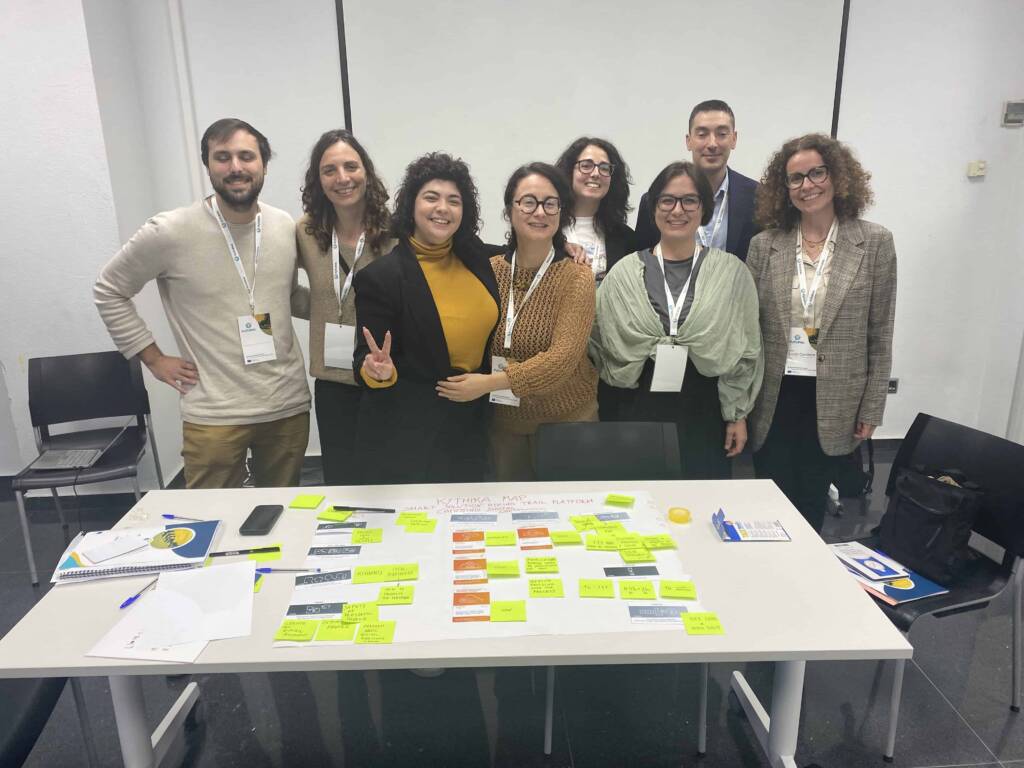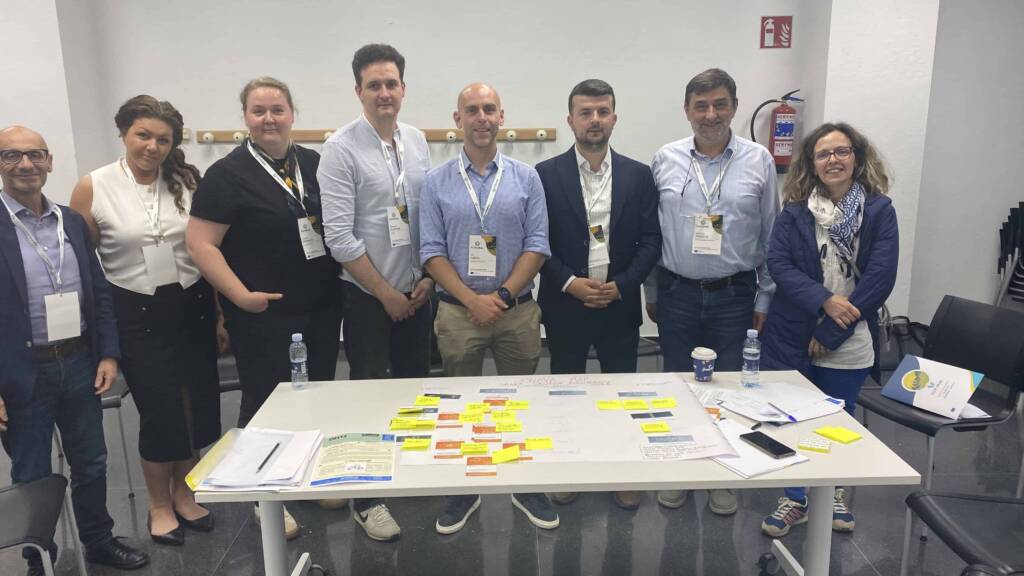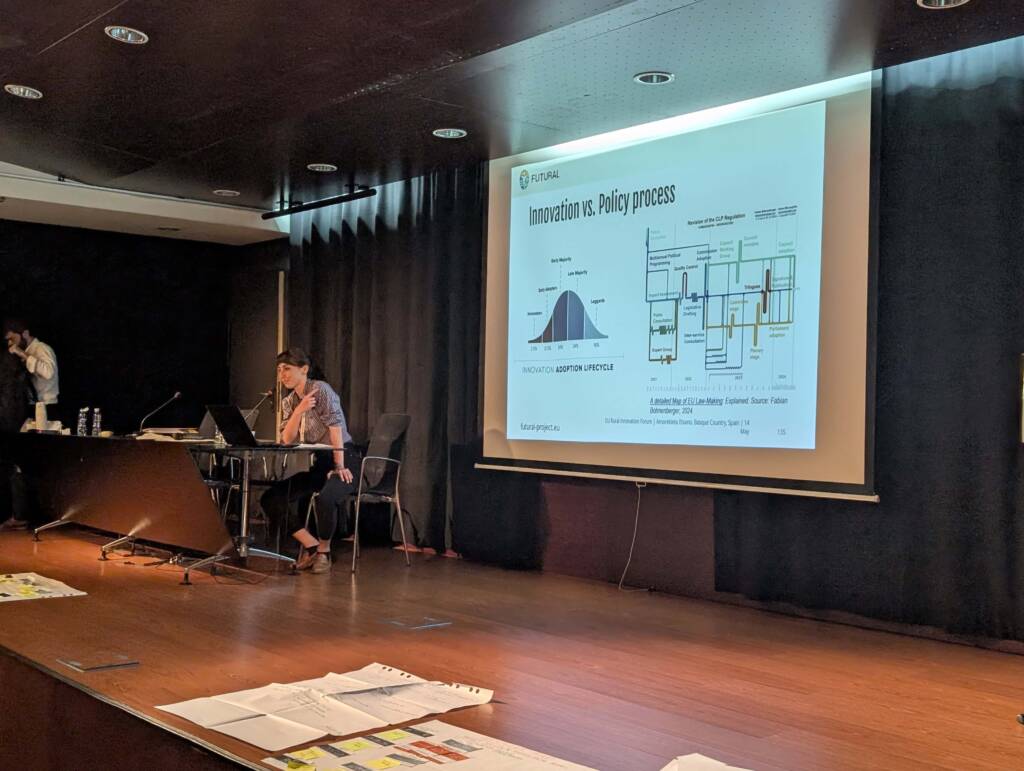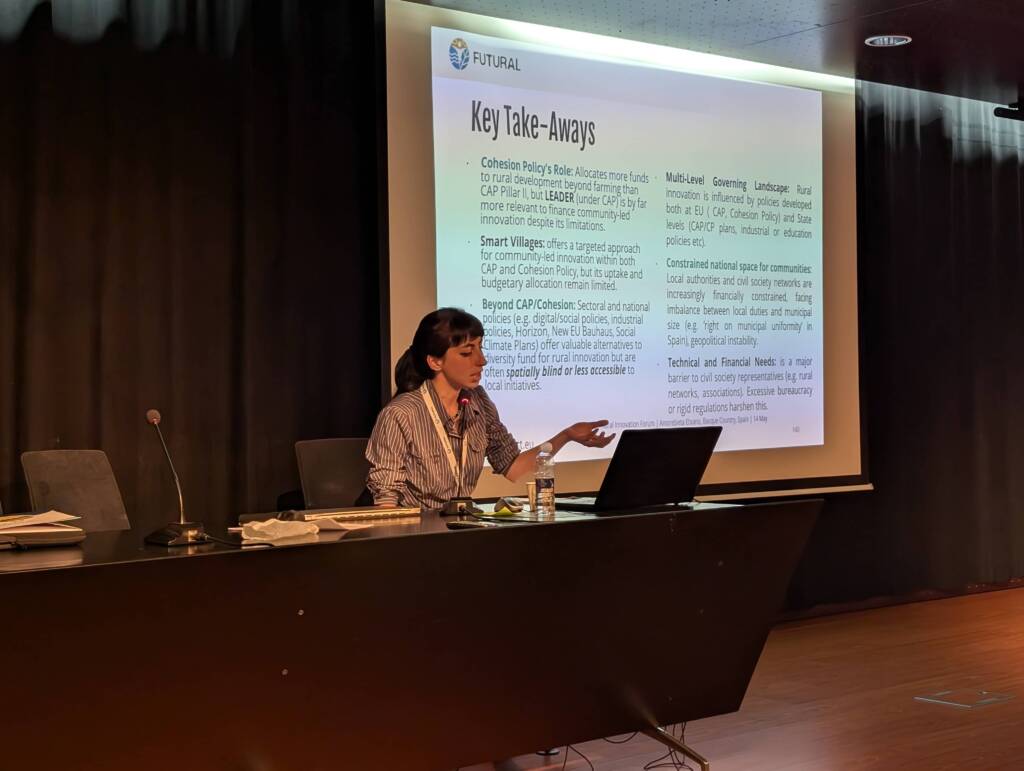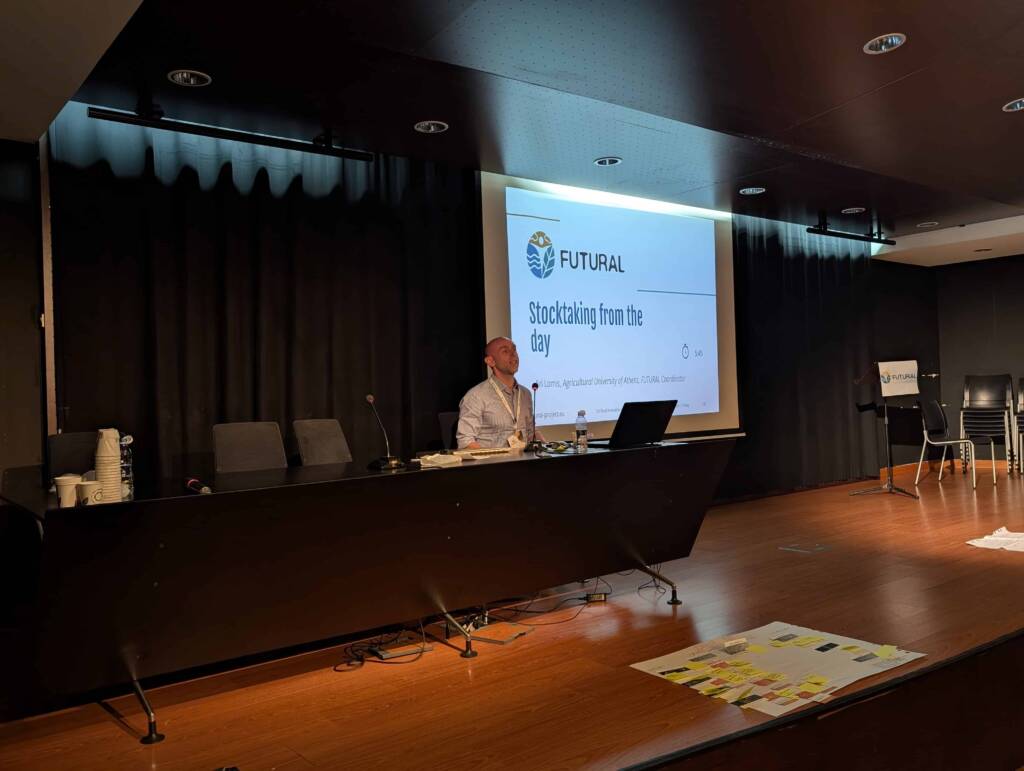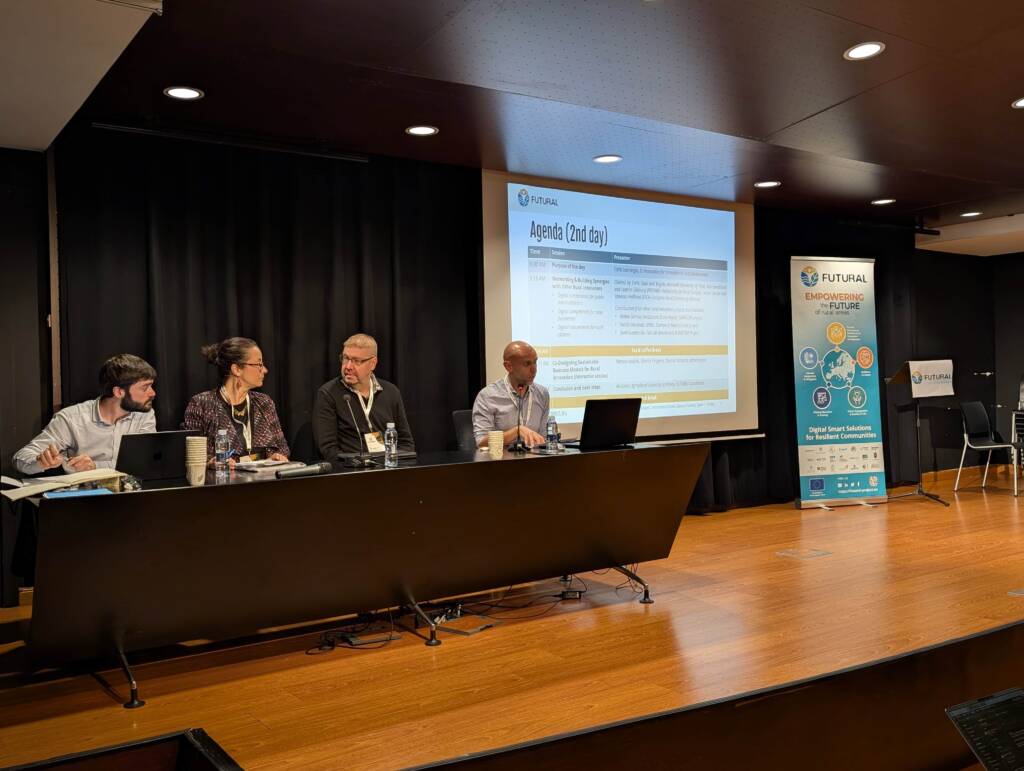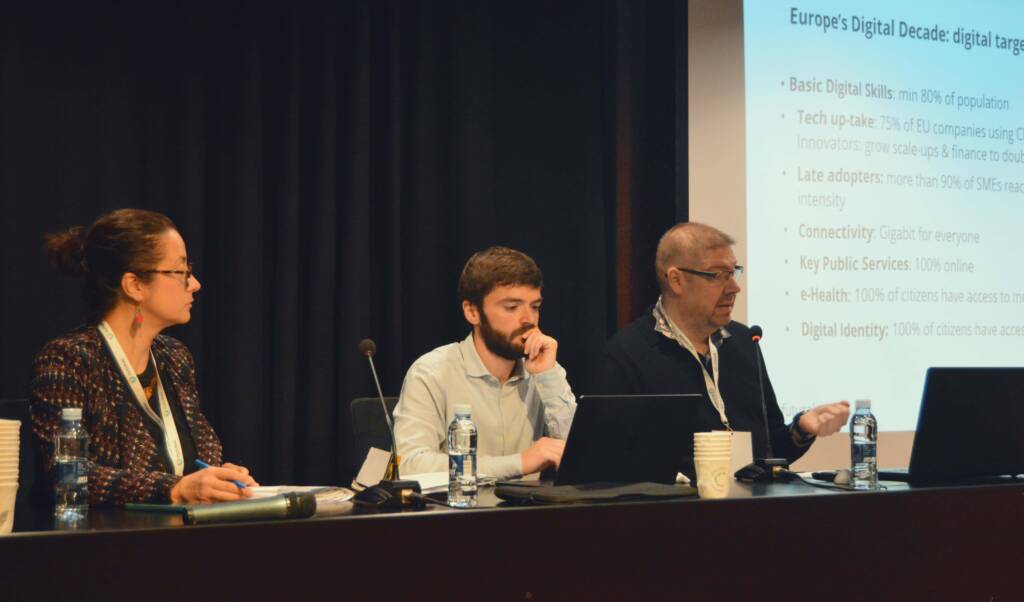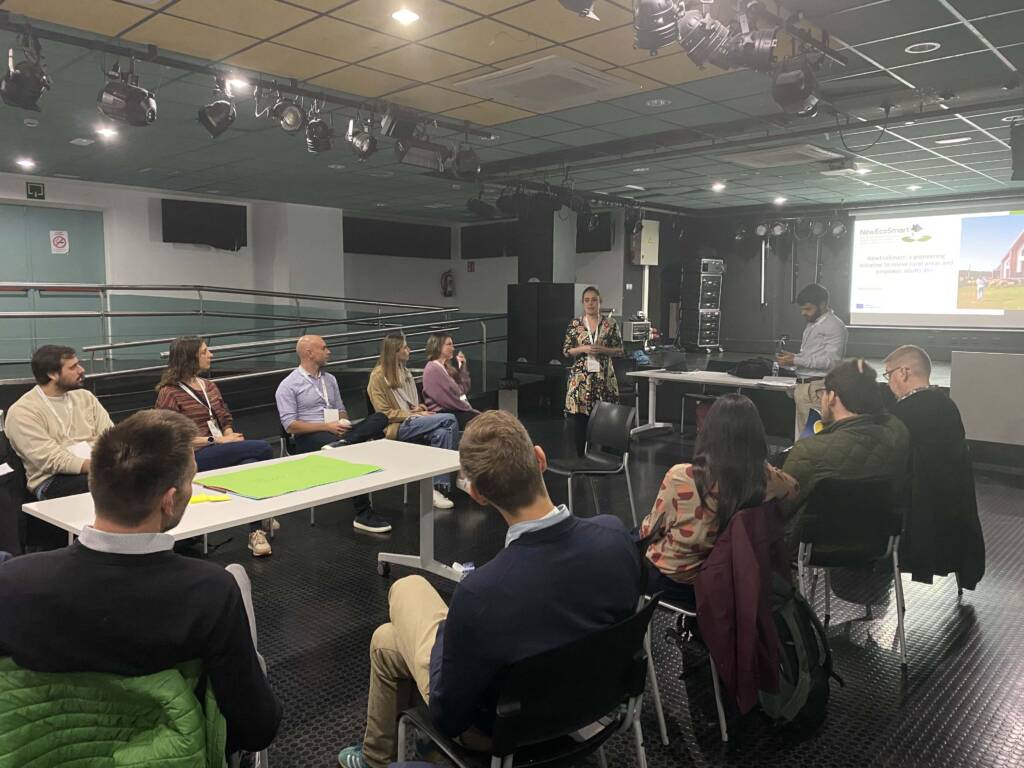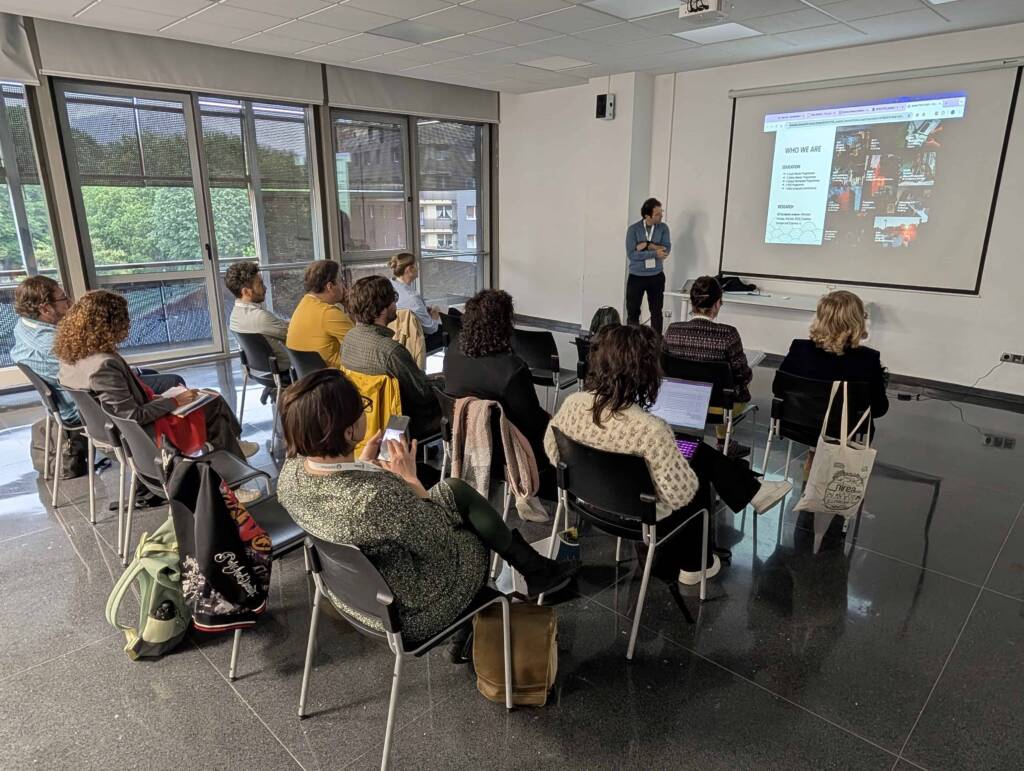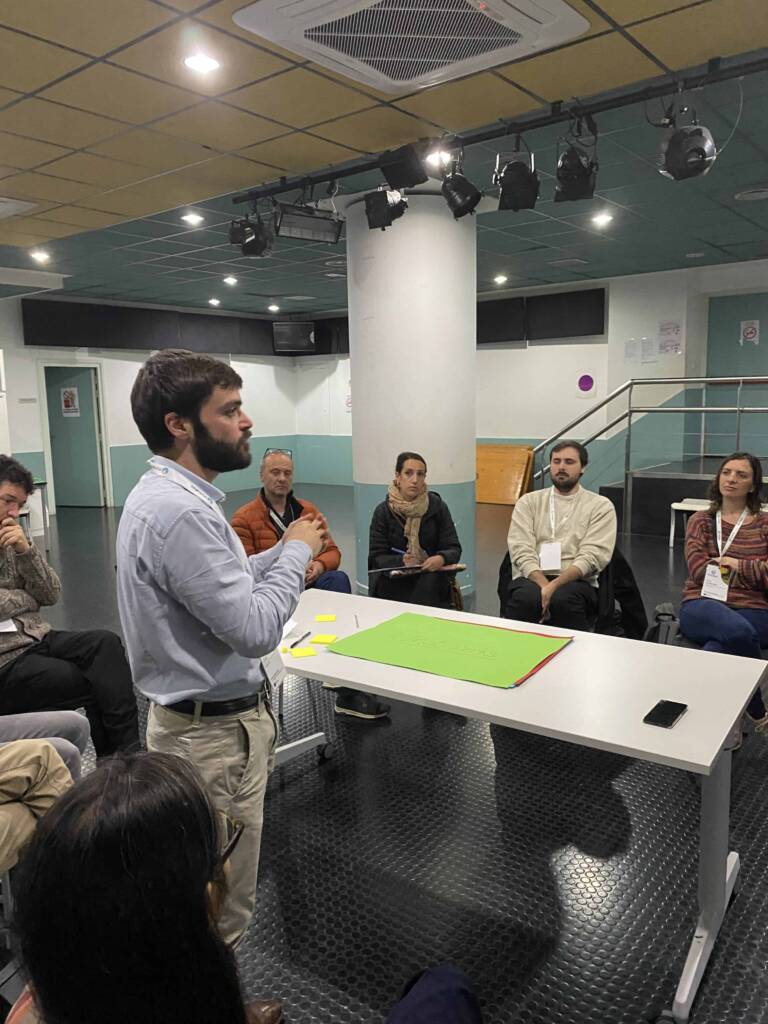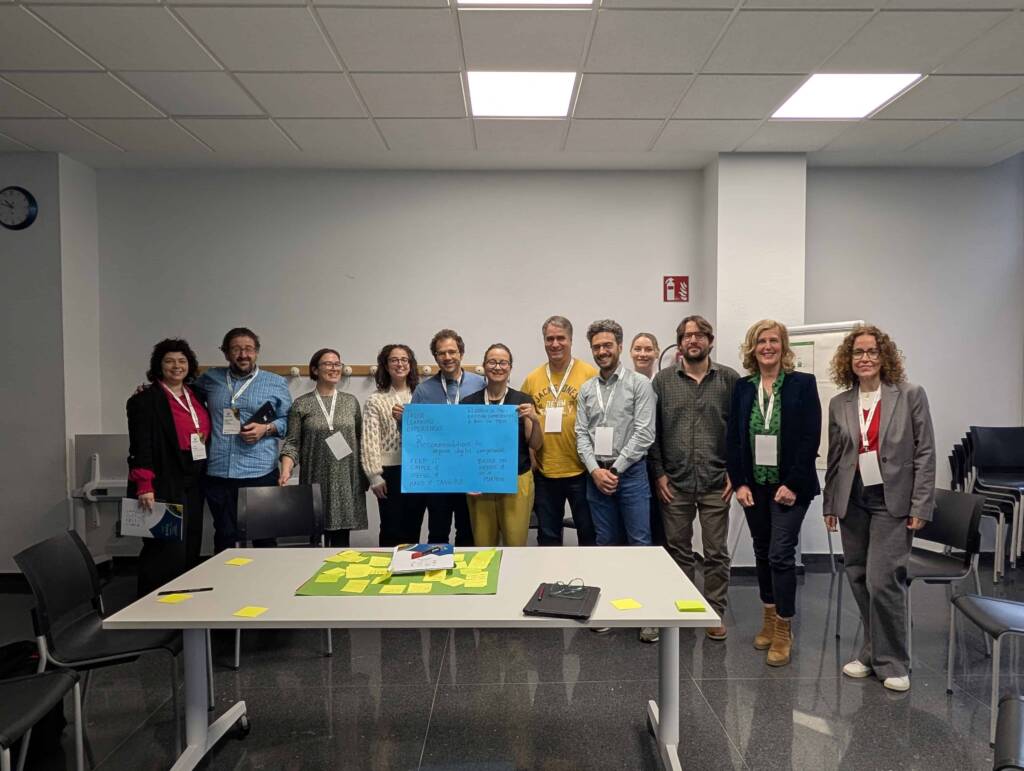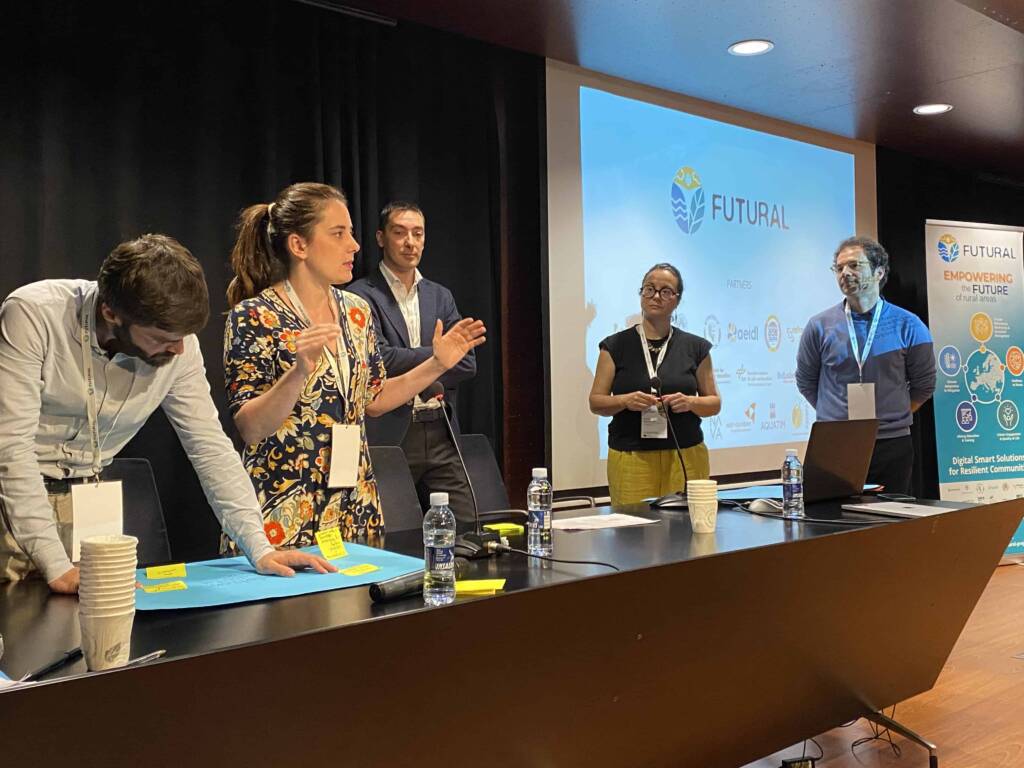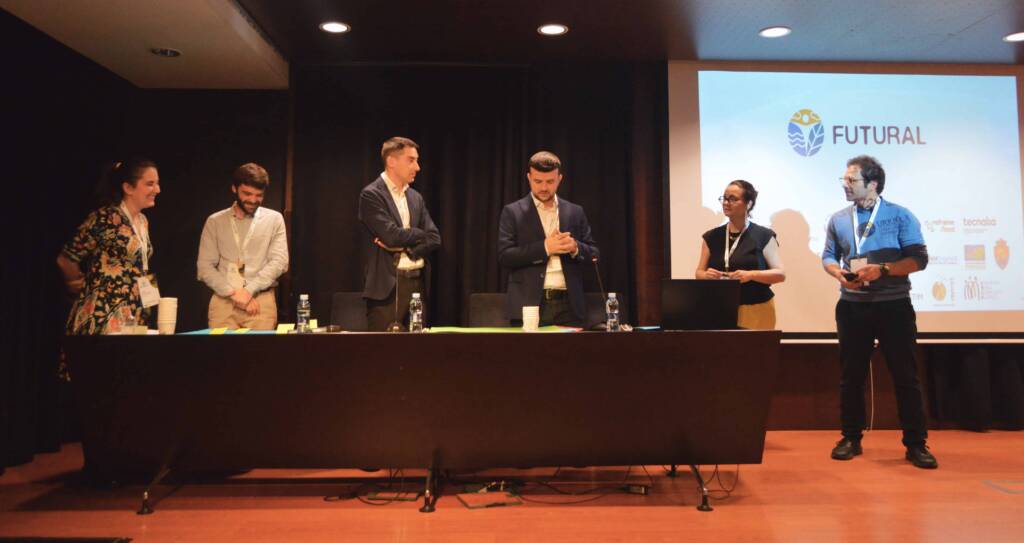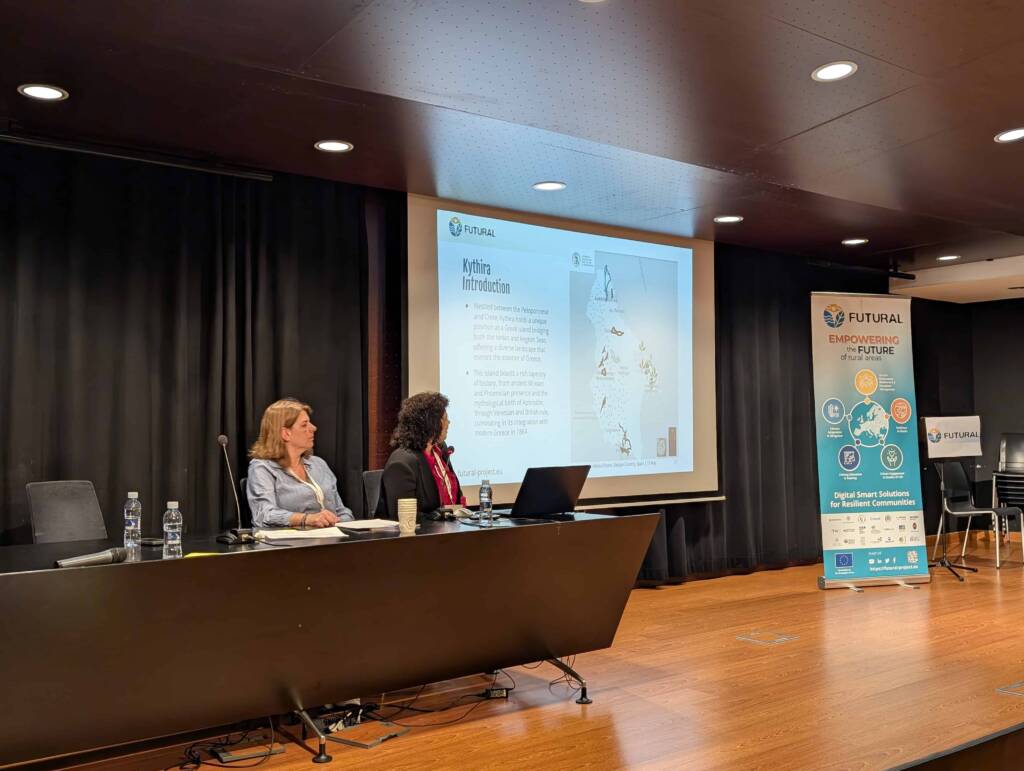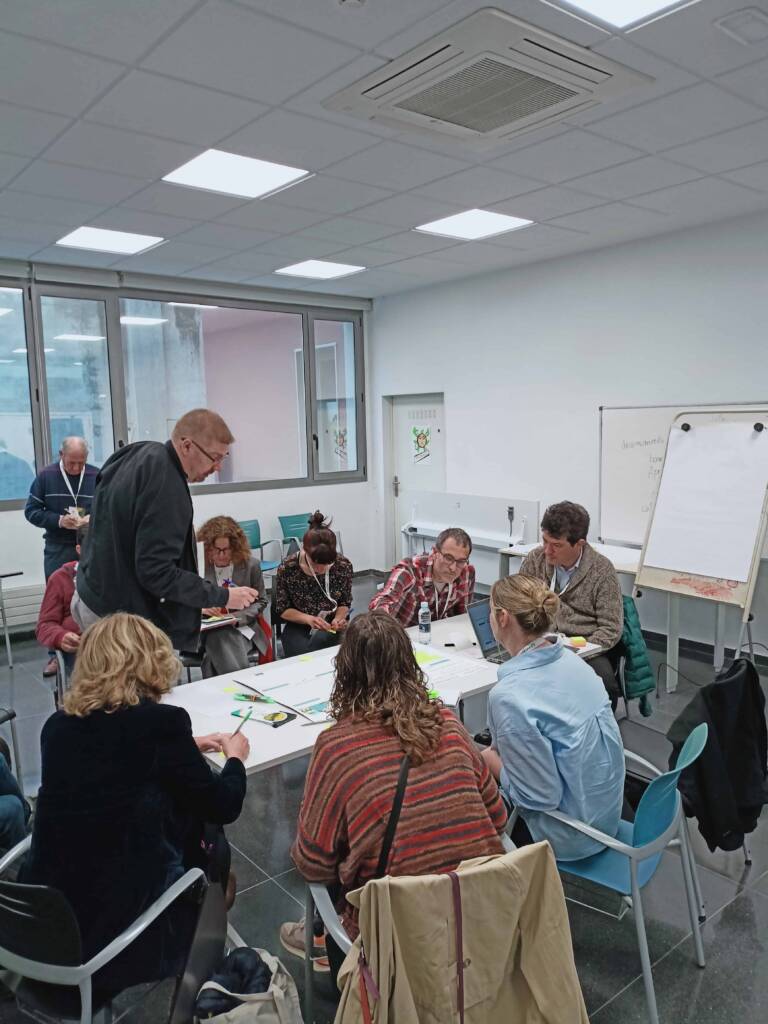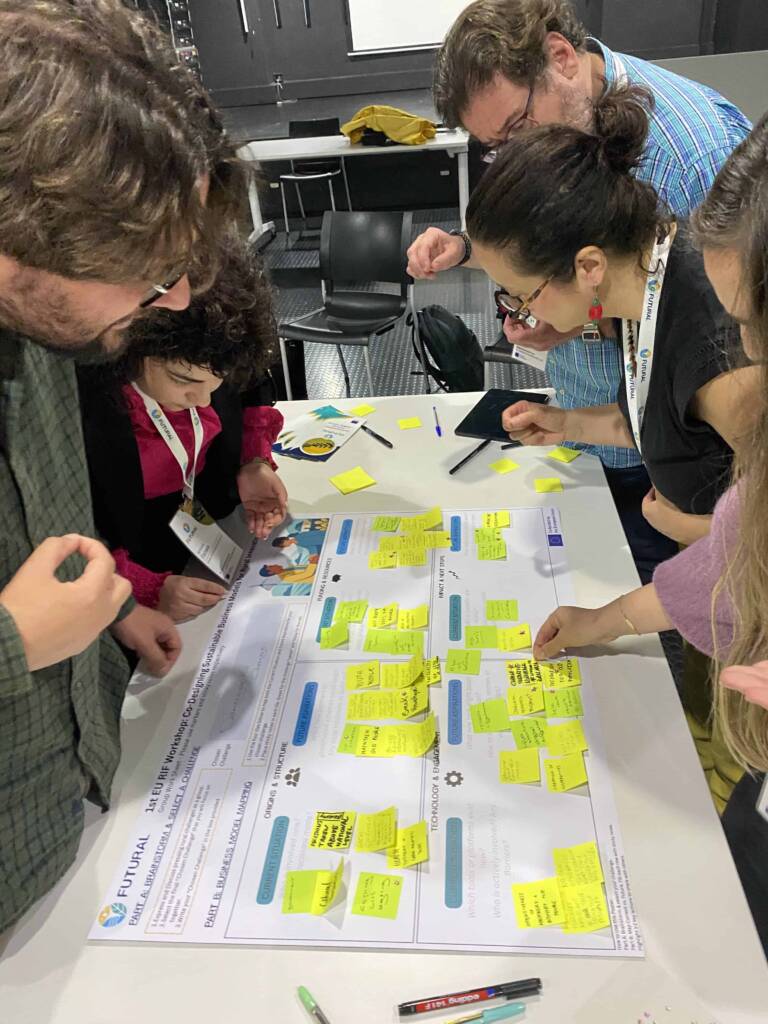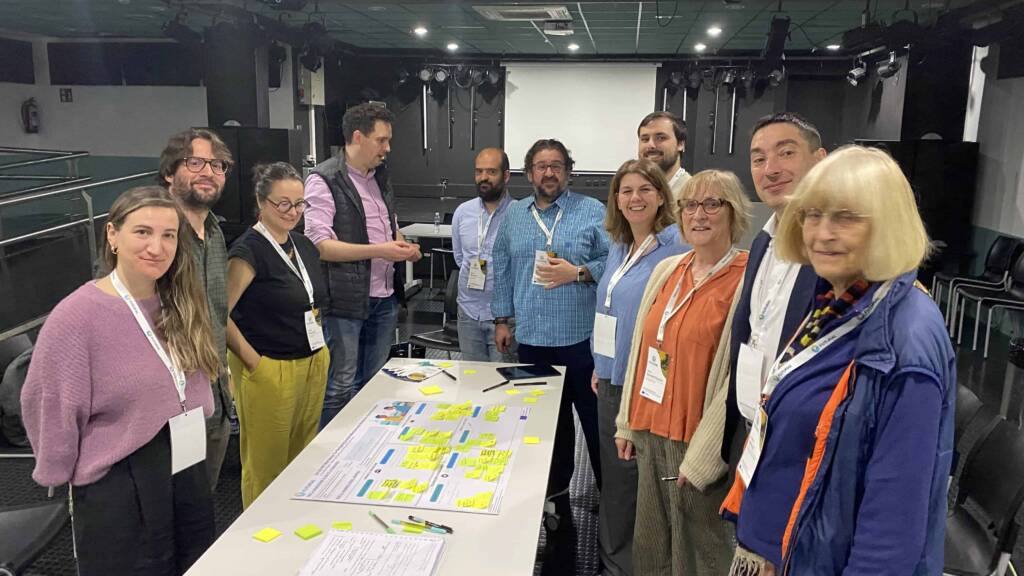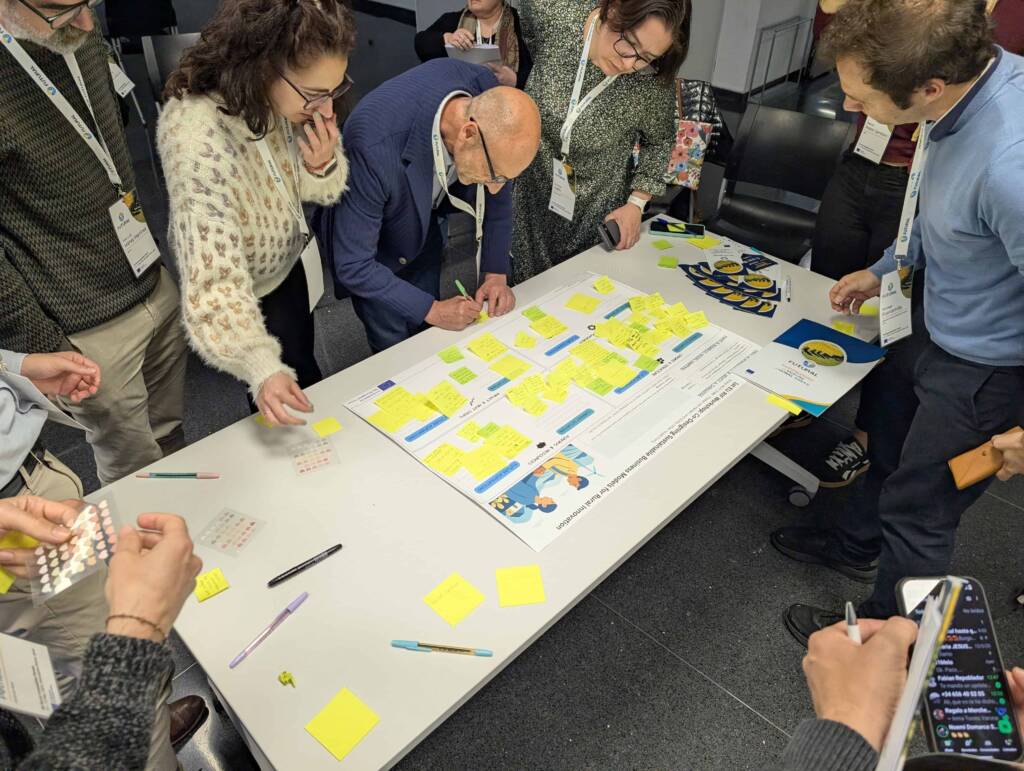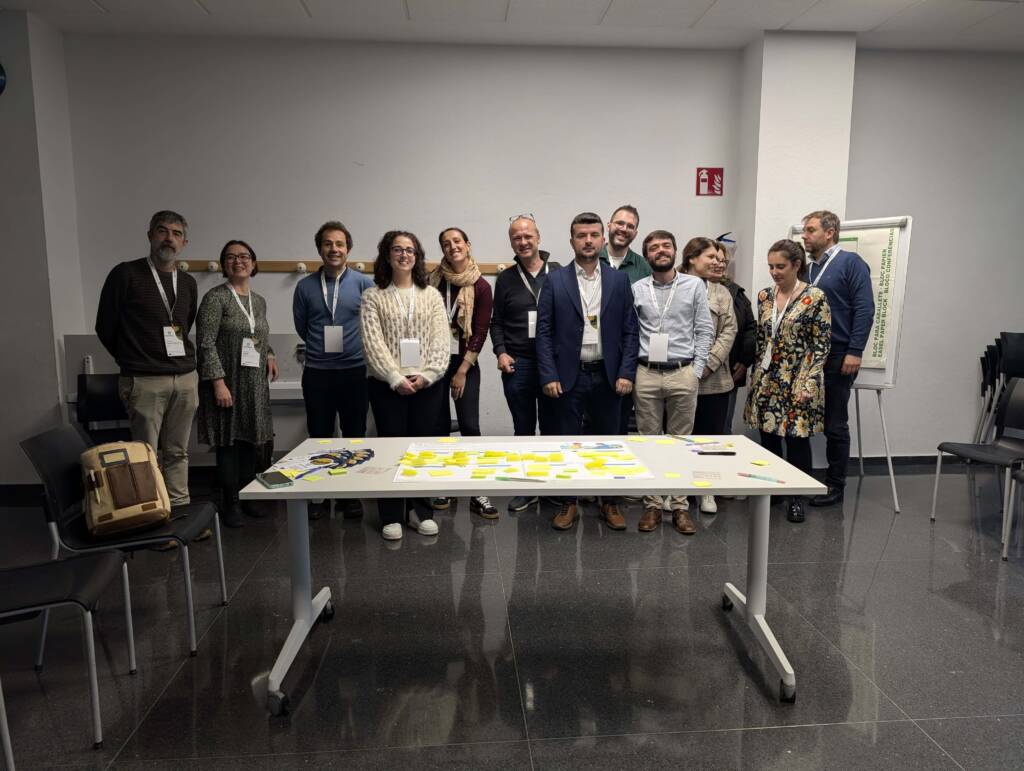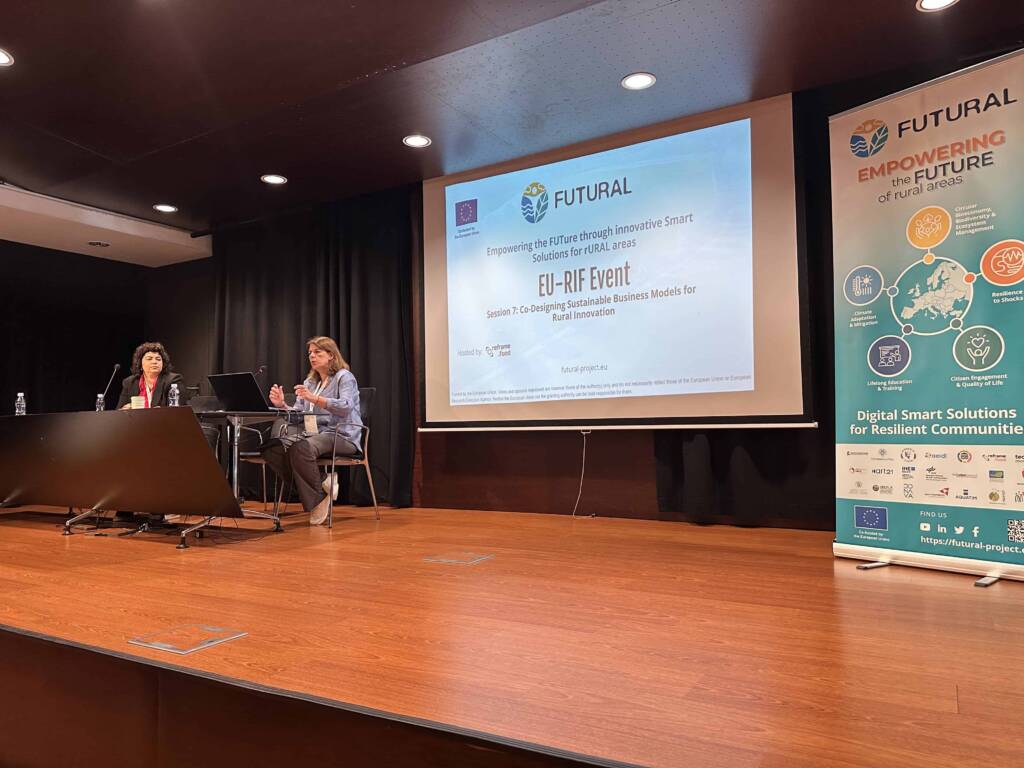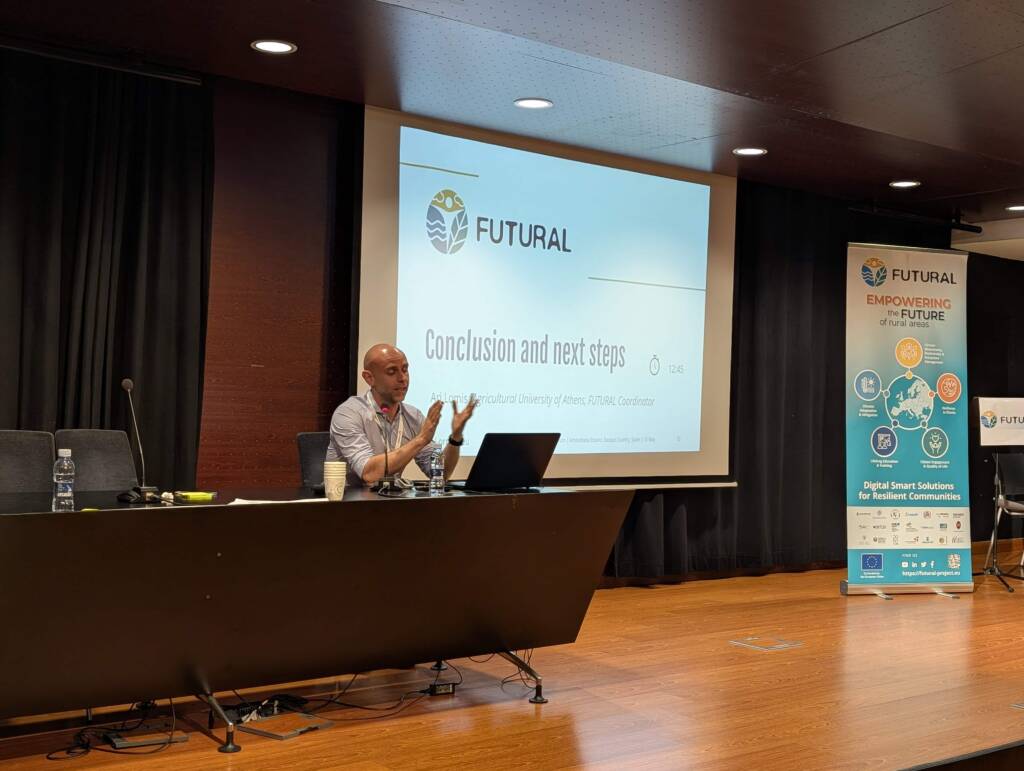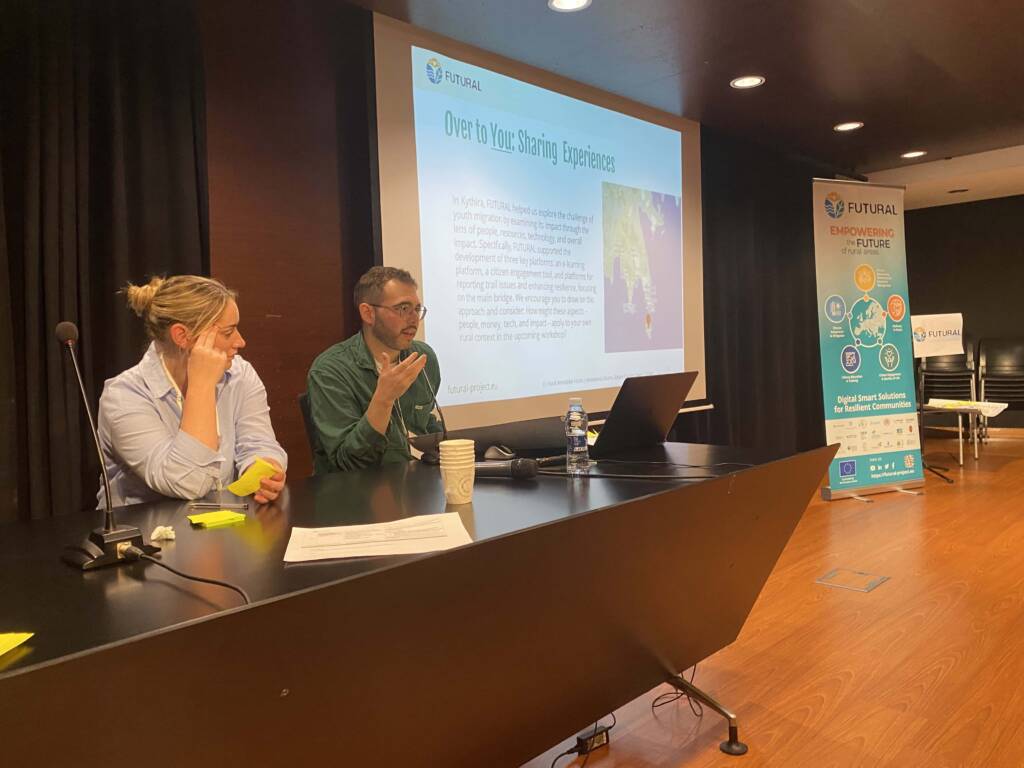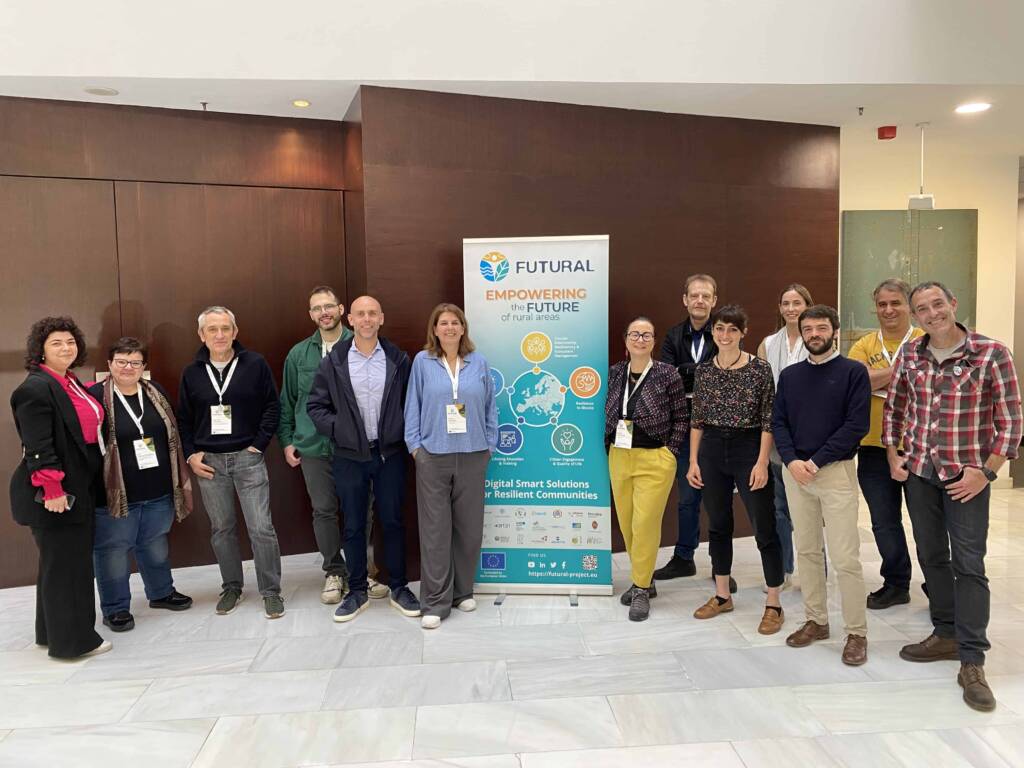From an idea into collective action
Just one year ago, the EU Rural Innovation Forum (EU-RIF) existed mainly as an idea in the Grant Agreement of the FUTURAL project. Last week, on 14 and 15 May 2025, technology providers, researchers, policy-makers, and rural actors gathered in Amorebieta-Etxano (Basque Country, Spain) and showed that the idea has grown into a real movement across Europe.
EU-RIF’s purpose is clear: connect rural actors across Europe, spark collaboration, and accelerate the uptake of digital Smart Solutions that improve the quality of life and well-being in rural communities. The forum proved that purpose in practice, by blending together capacity-building workshops, Smart Solutions showcase and Metasearch Platform demo, networking & building synergies, and co-designing business modelling interactive workshops, and policy sessions—all in a two-day event.
“It is only through concerted and collective effort that we will be able to transform our rural communities into innovative, vibrant, and forward-looking spaces” — Erramun Osa, President of the Urkiola Rural Development Association
What happened in Amorebieta-Etxano
Day 1: 14 May 2025
The EU-RIF commenced with the welcome notes of Ainhoa Salterain, Mayor of Amorebieta-Etxano and Erramun Osa, President of Urkiola Rural Development Association. Then Ari Lomis, Project Manager of FUTURAL project presented the EU-RIF objectives and the specific sessions taking place during the 2 – day event.
Session 1: Showcasing Learning Journeys: Insights from Six Rural Areas
While innovations are being co-created with rural stakeholders participating in the Multi-Actor Pilots (MAP), the Capacity Building Programme allows rural actors to acquire knowledge, skills, and attitudes to embrace and implement a sustainable rural digitalization.
In this session, chaired by Carlo Giua and Brigida Marovelli (University of Pisa), the Multi-Actor Pilot (MAP) regions shared the first results of their co-creation work, from the biodiversity score / wildlife monitoring tool to circular bioeconomy platform, demonstrating that community-led capacity-building is already translating needs into prototypes.
Session 2: FUTURAL Smart Solutions: Empowering Rural Innovation & Session 3: Making Smart Solutions accessible with FUTURAL Metasearch Platform
Nikos Tantaroudas (ICCS), delivered a key presentation showcasing the eight digital Smart Solutions spanning circular bioeconomy, biodiversity monitoring, hydrological modelling, bridge health crowdsensing, accessibility mapping, FixMyStreet-style citizen reporting and delivering Open Courses and the innovative Metasearch Platform developed by UPB – a powerful tool enhancing access to smart solutions and services for rural communities across Europe in one place, showing the breadth of challenges FUTURAL can tackle with a shared digital backbone.
Session 4: Building Digital Competencies for Smart Rural Communities: Tools and Insights
Carlo Giua and Brigida Marovelli (University of Pisa) introduced the Scaffold Cards method (developed by JRC and European Training Foundation) and the Digital Competence framework (developed by JRC). The Scaffold Cards were tested with the EU-RIF participants, as a tool to design digital learning experiences in rural areas (with application in MAPs contexts), helping them design the next round of training workshops using the EU DigComp framework, and ensuring that Smart Solutions don’t outpace the skills of the people meant to use them.
Session 5: Rural Innovation in Policies: Are Policies Less Smart Than Smart Rural Areas?
Carla Lostrangio (AEIDL) mapped how LEADER, Smart Villages, Horizon Europe and Cohesion Policy currently support – or fail to support – community-led innovation, and proposed eight actionable recommendations.
Key Takeaways from Day 1
- Evidence that community-led design is already producing tailored – to rural needs – prototypes and not just ideas in PowerPoint presentations.
- Whether circular bioeconomy, biodiversity scores or hydrological models, every tool contributes to the Metasearch platform—reducing “platform fatigue” for rural users.
- DigComp-aligned capacity building now features as a permanent element to future EU-RIF events.
- With new EU institutions and the post-2027 budget cycle taking shape, rural actors must capitalise on the momentum to secure set innovation funds.
Day 2: 15 May 2025
If Day 1 proved that the EU Rural Innovation Forum has momentum, Day 2 showed how this energy will be sustained—through stronger networks, sharper skills and business models that can respond to real local challenges.
Session 6: Networking & Building Synergies
Kim Smedslund (PREPARE- Partnership for Rural Europe) mapped Europe’s persistent urban-rural digital divide and the 2030 Digital Decade targets; spotlighted CORA & COM³ tools that upskill citizens, SMEs and public authorities.
This introduction set the stage for deeper exploration in breakout groups [chaired by Carlo Giua and Brigida Marovelli (University of Pisa), Kim Smedslund and Leotrim Gërmizaj (PREPARE- Partnership for Rural Europe), Louise Lennon and Vanessa Healhead (ERCA- European Rural Community Alliance)] where participants were invited to share their own project experiences and insights, building on the themes in the introductory sister project presentations by:
● Matteo Gerosa, Fondazione Bruno Kessler, SMARTERA project
● Natália Machado, SHINE 2Europe, NewEcoSmart project
● Santi Fuentemilla, Fab Lab Barcelona & RURACTIVE Project
Project Gallery Wall
A Project Gallery Wall was introduced as part of the networking session. This visual display showcased key information about each participating initiative, enabling participants to explore and learn about one another’s work in an engaging and time-efficient way.
Session 7: Co-Designing Sustainable Business Models for Rural Innovation
The session was chaired by Natassa Koufaki, Giannis Firogenis, and Stavros Tsitouras (RFF), and focused on how to co-create viable, inclusive, and sustainable business models that respond to real local challenges.
Antonia Fatsea (Kythira MAP led by KIPA), shared Kythira’s story as a practical, real-world case study of tackling a rural challenge within the FUTURAL project, acting as a prompt/example for the business model workshop that followed. Participants were then invited to tackle real-world rural challenges – Rural Mobility, Access to Finance, and Demographic Shift – through the lens of the reframe.food business model framework. In small working groups (chaired by Natassa Koufaki, Giannis Fyrogenis, and Stavros Tsitouras), they mapped out:
Root causes and key actors
- Sustainable financing and hidden assets
- Tools for digital inclusion and engagement
- Long-term impact and scale-up potential
Key Takeaways from Day 2
- Skills, synergies and scale up mechanisms must grow in parallel with technology if smart rural innovation is to move from Multi-Actor pilots and become an everyday practice.
- Co-designing with communities leads to a richer understanding of diverse local needs and solutions that are genuinely fit-for-purpose.
The first EU-RIF proved that concerted and collective effort is not only possible—it is already in action
Stay tuned, stay connected, and join us as FUTURAL’s rural innovation journey continues.
Presentations of Day 1 are available here.
Presentations of Day 2 are available here.
Photo Gallery
